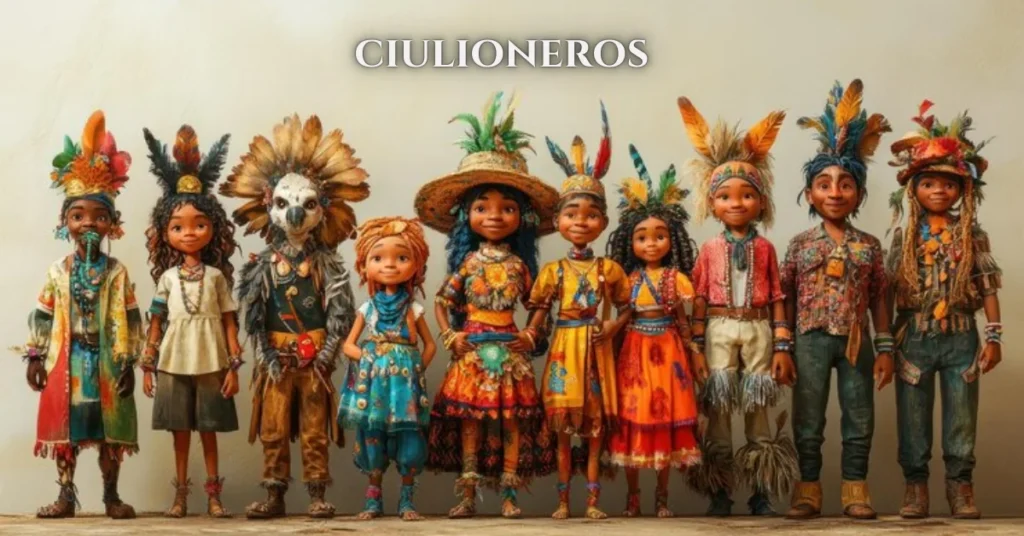Introduction
What Are Ciulioneros?
Imagine a swirling storm of color, rhythm, and soul—that’s a Ciulionero in action. They’re not just dancers or musicians; they’re the living vessels of centuries-old traditions that whisper tales of love, struggle, and unity. Hailing from the rich cultural heart of South America, Ciulioneros are performers with a purpose: to keep folklore alive and vibrant.
Why They Still Matter Today
In an age ruled by algorithms and screen time, traditions like the Ciulioneros offer something real. They’re like a cultural heartbeat—keeping communities connected to their past while grooving into the future. They matter because they remind us of who we are and where we come from.
The Origins of the Ciulioneros
Rooted in Indigenous Traditions
Long before colonization, indigenous communities across South America performed ritual dances to honor deities, celebrate harvests, or mourn losses. These rituals laid the foundation for what would later evolve into the Ciulioneros tradition.
Evolution Through Colonial Influence
As European colonizers brought new religions, politics, and cultures, indigenous expressions weren’t erased—they morphed. The Ciulioneros became a fusion of native spiritual practices and Catholic symbolism, a beautiful blend that still pulses in today’s performances.
Myth, Legend, and Ritual in Early Times
Many performances were once deeply spiritual. Dances mimicked gods, animals, and natural forces, while costumes were crafted to reflect mythological beings. The Ciulioneros inherited this legacy, making each dance a chapter of a grand mythological book.
The Cultural Significance
More Than Just Performance
A Ciulionero performance isn’t just a show—it’s a living archive of a people’s soul. It holds within it stories, emotions, prayers, and memories passed down not by books, but by rhythm and steps.
Bridging Generations Through Storytelling
Every step tells a story. Grandparents teach their grandchildren not just how to dance, but why to dance. It’s like oral storytelling wrapped in rhythm.
The Role of Oral Tradition
Without oral tradition, Ciulioneros wouldn’t exist. The entire tradition thrives on word-of-mouth, from teaching choreography to explaining costume choices.
Traditional Costumes and Symbolism
The Power of Color and Design
Each costume bursts with meaning. Bright reds might symbolize life and celebration, while deep blues could echo water spirits. It’s not just flair—it’s language.
Materials Used and Their Meaning
Feathers, beads, woven fabrics—all materials are chosen for their spiritual or cultural significance. Even the way a hat is tilted can indicate a performer’s role in the dance.
Dances of the Ciulioneros
Most Popular Dance Forms
From the Fiesta del Sol in Peru to the Diablada in Bolivia, Ciulioneros perform dozens of unique dance styles, each with its own story and tempo.
Symbolism in Movement
It’s not just fancy footwork. A stomp might symbolize anger or resistance. A twirl could represent transformation. Every gesture is intentional.
Regional Variations in Style
In highland regions, the dances are intense and grounded. On the coast, they’re fluid and fast-paced. Each region shapes its own version of the Ciulioneros’ art.
Music and Instruments
The Soundtrack of the Tradition
Drums echo the heartbeat. Flutes mimic birdsong. Stringed instruments like the charango add flair and emotion. The music is as vital as the dance.
How Music Enhances the Ritual
Think of it like a movie soundtrack—without it, something’s missing. Music builds tension, joy, sorrow. It’s the unseen character in every Ciulionero story.
Modern-Day Ciulioneros
From Villages to Big Cities
You no longer have to hike into the Andes to see a Ciulionero performance. Today, you’ll find them lighting up urban stages and global festivals.
Keeping the Flame Alive in Youth Culture
Teens are remixing traditional beats with electronic rhythms. School programs teach Ciulionero history. This isn’t fading—it’s evolving.
TikTok, YouTube, and Digital Revival
Social media is giving Ciulioneros a second wind. Viral videos and dance challenges make folklore fun again—and global.
Influence on South American Pop Culture
Ciulioneros in Music Videos and Fashion
Big-name Latin artists are incorporating Ciulioneros’ style into their visuals. Designers love their bold fabrics and earthy patterns. It’s gone from festival to runway.
How Filmmakers Are Telling Their Story
Documentaries, short films, and even animation are spotlighting this vibrant tradition, bringing its stories to screens across the globe.
Preserving the Legacy
Community Workshops and Festivals
Local leaders host storytelling sessions, dance rehearsals, and craft nights to pass down knowledge. It’s hands-on history.
Educational Initiatives and Heritage Clubs
Some schools now include Ciulionero studies in their curriculum. Students learn choreography, folklore, and even costume-making.
Challenges Facing Ciulioneros Today
Globalization and Cultural Erosion
Fast fashion and digital distractions threaten ancient traditions. Some fear the heart of Ciulioneros could get lost in the noise.
The Battle Between Authenticity and Innovation
How do you honor the past while embracing the future? That’s the daily tightrope Ciulioneros walk.
Future of the Tradition
New Interpretations of Old Stories
Young artists are putting modern twists on ancient tales, creating performances that feel both timeless and brand-new.
Can Technology Help or Hurt?
It depends how it’s used. When done right, tech can preserve, amplify, and evolve folklore—not erase it.
Conclusion
The Ciulioneros aren’t just preserving the past—they’re rewriting the future with every beat of the drum and every stomp of their feet. They’re proof that traditions can adapt without losing their soul. Whether you’re watching them live at a festival or in a TikTok video, one thing’s clear: the heart of South America beats strong in the rhythm of the Ciulioneros.
FAQs
What is the origin of the Ciulioneros?
Ciulioneros originate from indigenous South American rituals, later blending with Spanish colonial influences.
How are Ciulioneros celebrated today?
Through live performances, digital platforms, school programs, and global festivals showcasing their dance and music.
Are Ciulioneros linked to specific regions?
Yes, regions like the Andes, Amazon, and coastal areas each have unique Ciulioneros traditions.
What is unique about their costumes?
Their costumes carry deep symbolic meaning through color, fabric, and design—each telling part of a larger story.
How can someone experience Ciulioneros culture?
Attend festivals in South America, follow online platforms, or join workshops hosted by cultural preservation groups.






